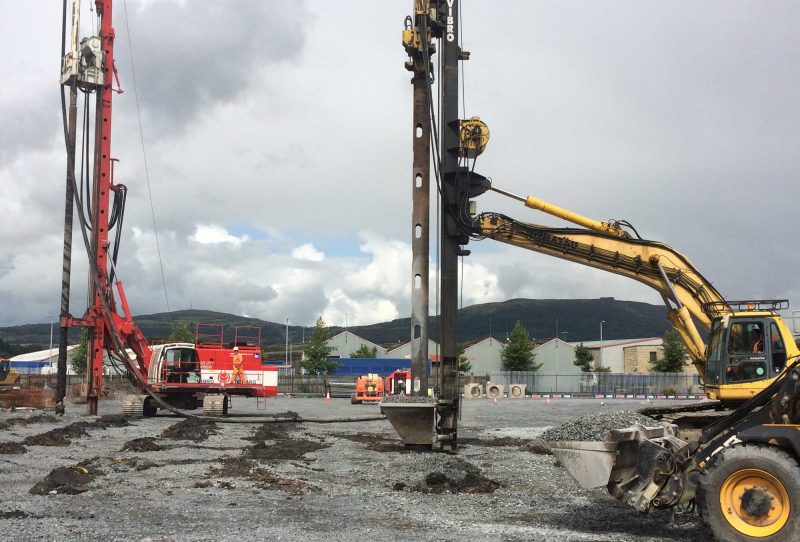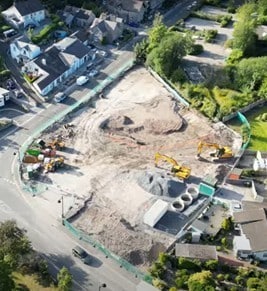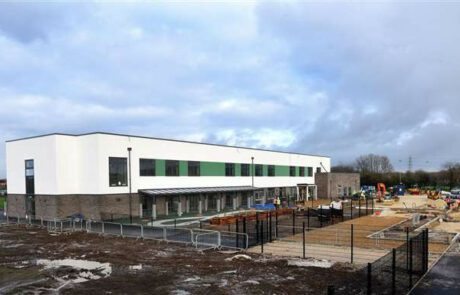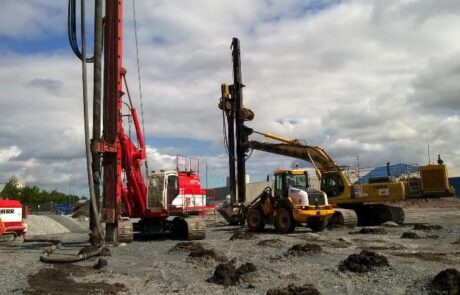Where Controlled Modulus Columns are adopted on sites with near surface granular or mixed soils, the top of the CMC can be replaced with stone aggregate to produce a composite column, known as a Bi-Modulus Column (BMC).
The Bi-Modulus Columns optimise the transfer of the building loads into the column and is constructed in two stages: The CMC is formed first to the surface followed by the construction of a stone column at the top.

Benefits
- Enhanced bearing capacity
- A reduction in the total and differential settlements
- Easy excavation for foundations
- The displacement process creates no spoil
- Very high production rates reducing costs
Application
- Heavily loaded commercial/industrial floor slabs
- Road and rail embankments
- Silos, tanks and wind turbines
- Residential buildings traditional founded on driven piles
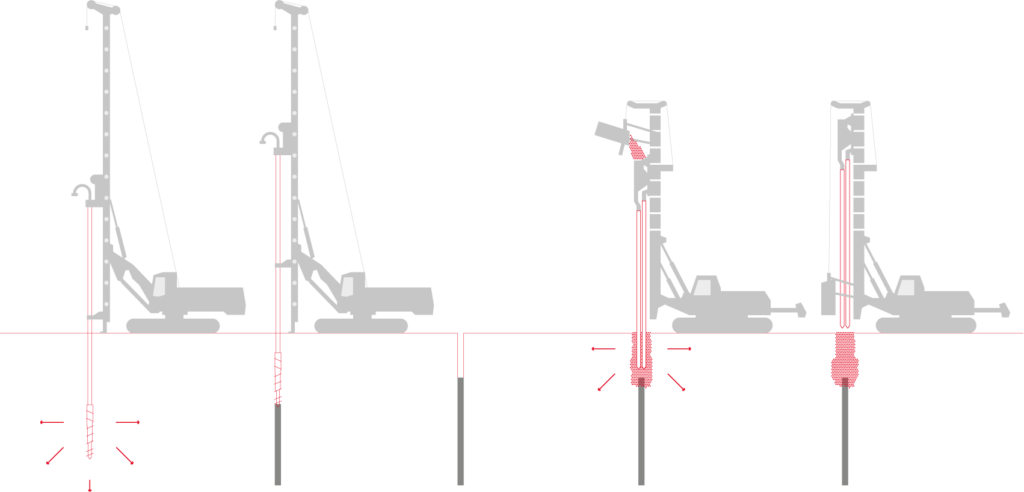
Presentation and key elements
Bi-Modulus Columns, explained
First developed in the 2000’s, Bi-Modulus Columns comprise of vertical soil reinforcement from rigid inclusions, topped with compacted granular material. The global Menard group developed the Bi-Modulus Column specification in 2009, leading to its independent review and approval via third party evaluation, allowing its use on many successful projects for Menard.
The Bi-Modulus Column increases the bearing capacity of the soil, reducing the total and differential settlement as well as improving the stress distribution. This, ultimately, leads to an optimization of the thickness of the load transfer platform between the structure and the inclusions.
Basic principle of Bi-Modulus Columns
Bi-Modulus Columns combine the advantages of Vibro Stone Columns, such as the ease of excavation, but without the limitations in very soft soils where Vibro Stone Columns are incompatible due to lack of lateral confinement and bulging risk. This alone, has allowed the application of Bi-Modulus Columns to grow extensively on a range of ground conditions, across project sectors since it was developed.
As such, Bi-Modulus Columns are efficient in cases of deep cut-off, to avoid unwanted movements in slabs on backfill or in seismic zones.
Installing Bi-Modulus Columns
The first stage involves the rigid inclusion include installing the Controlled Modulus Columns with concrete, stopping at least 1 metre above the Bi-Modulus connection to ensure effective continuity.
Following the concrete curing period phase, the granular top is installed. There is an optimum window for this step to be delivered.
Then, the stone column is interpenetrated into the Controlled Modulus Column head with a height of at least 50 cm over the top of the installed column. This three-stage process encompasses the execution of Bi-Modulus Columns.

